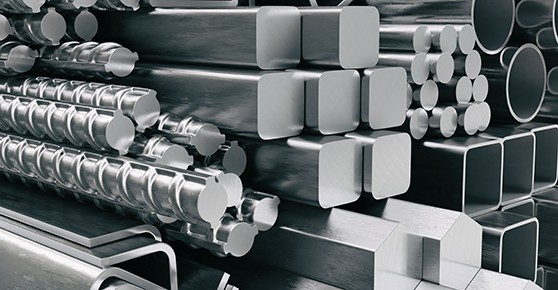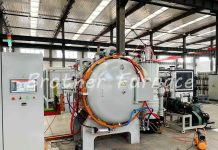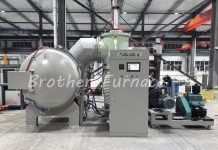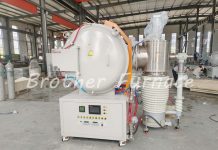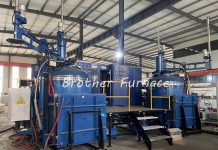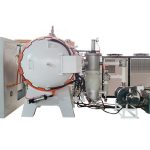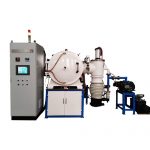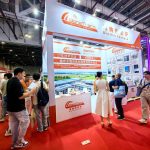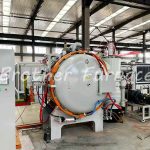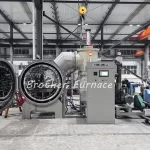Vacuum heat treatment is very important in the production of aluminum products. Starting today, we will talk in detail about vacuum heat treatment and aluminum products processing in 2 articles. Today this is the first article: the defects of traditional vacuum annealing technology.
Vacuum heat treatment and the production of aluminum
Vacuum heat treatment technology is a heat treatment technology that combines vacuum technology and heat treatment technology. Vacuum heat treatment in the vacuum environment refers to is an atmosphere below one-atmosphere pressure, including low vacuum, medium vacuum, high vacuum, and ultra-high vacuum. All and part of the heat treatment process is carried out under vacuum, and the quality of heat treatment is greatly improved.
Vacuum heat treatment is an important part of aluminum products processing. Compared to structural materials based on the strength, plasticity, toughness, specific strength, and other mechanical properties of aluminum and aluminum alloys, functional aluminum products are based on the low resistivity of aluminum, mainly using the unique dielectric properties of aluminum and its oxides.
Aluminum is extremely easy to oxidize in the air environment and generates a dense oxide film with high corrosion resistance. Structural materials of aluminum, such as aluminum alloy doors and windows, etc., make use of this characteristic and gain wide application in daily life. Functional aluminum processed products must be heat-treated in order to obtain specific superior dielectric properties so that the trace elements inside the product can be evenly distributed and the internal organization can be adjusted. If heat treatment is carried out in an air environment, it will cause excessive oxidation on the product surface and seriously affect the subsequent production process, therefore, heat treatment must be carried out in a vacuum environment.
Conventional vacuum heat treatment of functional aluminum processed products uses vacuum rotary vane pumps and vacuum booster pumps, vacuum diffusion pumps to pump to a high vacuum of 6.7×10-2Pa or more. And then the temperature inside the furnace is raised to the temperature required for the process by electric heating, and the aluminum processed products are heated and heat-treated by radiation under vacuum. After the heat treatment process is executed, the heating and heat preservation are stopped, and the furnace is discharged after natural cooling to the required temperature for the process and subsequent processing.
Defects of traditional vacuum annealing technology
The heat transfer in the heating process is in the form of radiation, convection, and conduction. In the vacuum environment, the heat transfer is in the form of radiation, and the heating efficiency of heat radiation is very low compared with that of heat convection and heat conduction. And the temperature difference between the inside and outside of the material is large, and the cooling stage is time-consuming by natural cooling.
In short, the traditional vacuum heat treatment method has low productivity and poor internal quality consistency of the material, which restricts the improvement of the production efficiency and product quality of functional aluminum processed products. After monitoring and data statistics, the temperature difference in the annealing process of traditional vacuum annealing furnace with the same furnace times is between 5 ~ 25 ℃, causing serious impact on the stability of product quality, low annealing temperature caused by the failure of the product’s inherent performance indicators, high annealing temperature caused by the appearance of rolled products, similar to sintering adhesion.
In the process of vacuum radiation heating, the heat of rolled aluminum products is conducted from the end to the center, resulting in uneven heating of the entire aluminum foil roll. In addition, the characteristics of the radiation heating method make it sensitive to the layout and heating performance of the heater and the differences in the product placement of aluminum products in the furnace, which further aggravates the uneven temperature of the products during the annealing process.
Under the traditional vacuum annealing method, the thermal stress problem combined with the evacuation power and volatilization of rolling oil and gas between the layers of rolled aluminum products causes a channeling layer. Thermal expansion and contraction problems are caused by layer and layer between the loose layer. The above string layer and the loose layer phenomenon will cause a large number of products scrapped.
The insulation material of the conventional vacuum furnace is working under vacuum and atmospheric pressure for a long time, and the ambient temperature changes greatly (between room temperature and 600℃), which causes the insulation material to collapse, the local insulation performance decreases, and the performance of the equipment decreases quickly.
In order to obtain high vacuum needs, the furnace shell is a water-cooled set design, high vacuum and high temperature of the dual impact, resulting in the furnace body structure parts prone to shell leakage, cooler leakage, shell corrosion bulging phenomenon. The above phenomena, so that the traditional vacuum annealing furnace in addition to high maintenance costs, resulting in equipment performance instability, further aggravating the process fluctuations, all this are affecting product quality and production efficiency.
So how can we solve the above problems? Please look forward to the next article.
Check out our Vacuum Furnace in details
Vacuum Heat Treatment (1): what is vacuum heat treatment, the feature, how to choose…
Vacuum Heat Treatment (2): How to choose the vacuum heating temperature and heating time?

